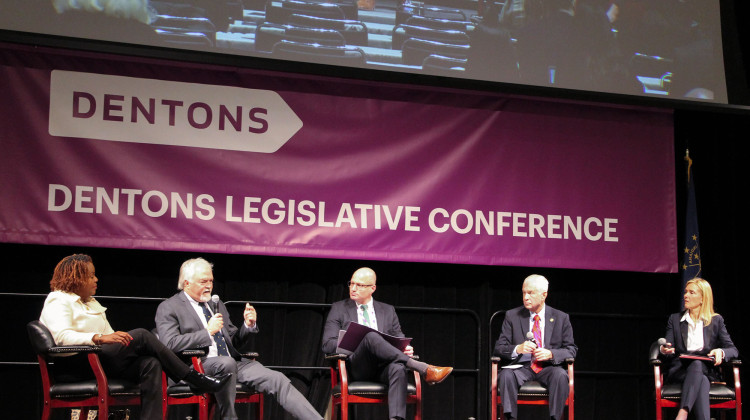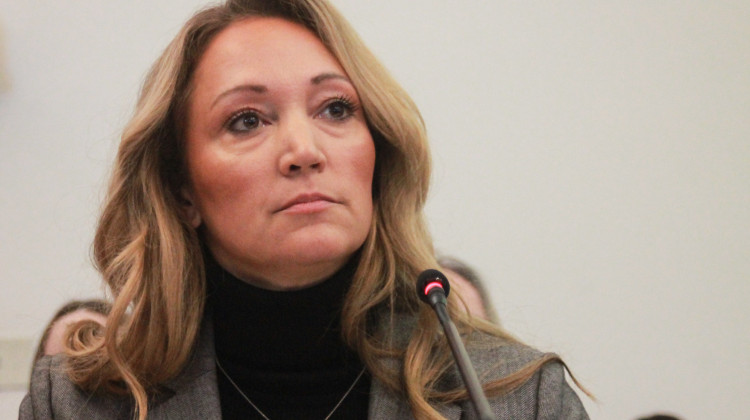
Coronavirus: Indiana Expects More Than $3B Shortfall, No Budget Cuts For K-12 Education
WFYI/File PhotoThe Indiana State Department of Health reported 39 additional confirmed deaths since Tuesday, bringing the state’s total to 2,304. The state announced more than 41,000 total confirmed cases, with more than 384,000 Hoosiers tested.
No Cuts To K-12 Education Funding, Despite Revenue Shortfalls Due To COVID-19
Indiana will not cut funding for K-12 schools, according to Gov. Eric Holcomb. At a news conference Wednesday, he said the state's budget for K-12 schools approved by lawmakers in 2019 will remain on track, despite revenue shortfalls spurred by the COVID-19 pandemic.
State agencies are cutting their budgets by 15 percent, and colleges and universities will see funding cuts of 7 percent. But Holcomb says after asking state leaders to find cuts elsewhere, funding for K-12 schools will follow the state's current budget.
Join the conversation and sign up for the Indiana 2020 Two-Way. Text "elections" to 73224. Your comments and questions in response to our weekly text help us find the answers you need on COVID-19 and the 2020 election.
"This was a collaborative effort for sure and it's one that's taken a few weeks to make sure that we could get to this place with confidence," he says.
State guidance encourages schools to enhance virtual learning options if parents decide to keep their kids home from school or in case a new surge of COVID-19 outbreaks cause some schools to close again in the fall. The Indiana Department of Education recommended state leaders allow schools access to the full amount of funding for students who would otherwise be in the classroom.
Educators Relieved K-12 Funding Safe From Cuts, Democrats Ask For More Protections
Teachers across the state are breathing a collective sigh of relief today, and many are praising the decision not to cut funding for K-12 schools this year even as Indiana faces major financial shortfalls.
Many school leaders feared the state's education budget approved by lawmakers in 2019 would be cut back in light of revenue shortfalls spurred by the COVID-19 pandemic. State agencies have been asked to cut 15 percent of their budgets, and colleges and universities are facing a 7 percent decrease.
Rep. Tonya Pfaff (D-Terre Haute) teaches high school math and sits on the General Assembly's House Education Committee. She said in an interview following the governor's announcement, it makes sense to keep cuts out of K-12 schools.
"I think what the governor announced today is just Hoosier common sense. I mean it's a good plan," she says.
Indiana Expects Budget Shortfall Of More Than $3 Billion By Next Year
Indiana fiscal officials expect the state to fall between $3 billion to 4 billion short of its current two-year state budget.
A new revenue forecast will come out later this year. But officials at the State Budget Committee meeting Wednesday say they expect a $1.7 billion shortfall this fiscal year (which ends in two weeks) and another roughly $2 billion loss next fiscal year.
Budget Director Zac Jackson says there are multiple steps the state must take to make its budget work.
“We will need to spend down those reserves," Jackson says. "We will need to cut spending and we will also need to use federal assistance as creatively as we legally can.”
Spread Of COVID-19 In Indiana Slows In Latest Fairbanks Study Results
The spread of COVID-19 seems to be slowing down in Indiana – that’s according to the latest results in a statewide study of the virus, led by the Fairbanks School of Public Health at IUPUI.
In the Fairbanks study’s first round of testing in late April, the number of people who actively had the virus was more than the number who previously contracted it - providing a sort of baseline for the spread of the disease.
Nir Menachemi, who leads the study, says the latest results show a slowdown in that spread.
“Because as of the first week of June, we had more people previously infected than those that were currently infected at that time,” Menachemi says.
Monroe County Health Department Investigating Recent COVID-19 Spike
The Monroe County Health Department is investigating the county's largest single-day spike in COVID-19 cases, after the number jumped from 190 to 202 positive cases Wednesday. The death toll in the county also increased by five.
A news release from the MCHD says all of the new deaths were related to long-term care facilities and involve patients over 60. Officials say half of the 12 newly-infected patients are under the age of 50.
Indiana Unemployment System Activates 13 Weeks Of Extended Benefits
The Indiana Department of Workforce Development says some out-of-work Hoosiers will now have access to an additional 13 weeks of unemployment benefits starting the week ending July 4.
In total, it means that between state and federal measures, unemployed workers could access up to a year’s worth of benefits.
The extended benefits are in addition to the state’s normal limit of 26 weeks and the federal extension of 13 weeks under the CARES Act.
The extension is triggered “on” during periods of high unemployment when the average of insured unemployed workers is above 5 percent for 13 consecutive weeks. The extended benefit program hasn't been activated in Indiana since the last recession.
Contact Lauren at lchapman@wfyi.org or follow her on Twitter at @laurenechapman_.
 DONATE
DONATE






 Support WFYI. We can't do it without you.
Support WFYI. We can't do it without you.